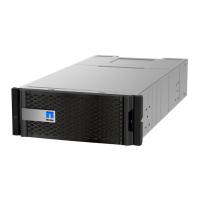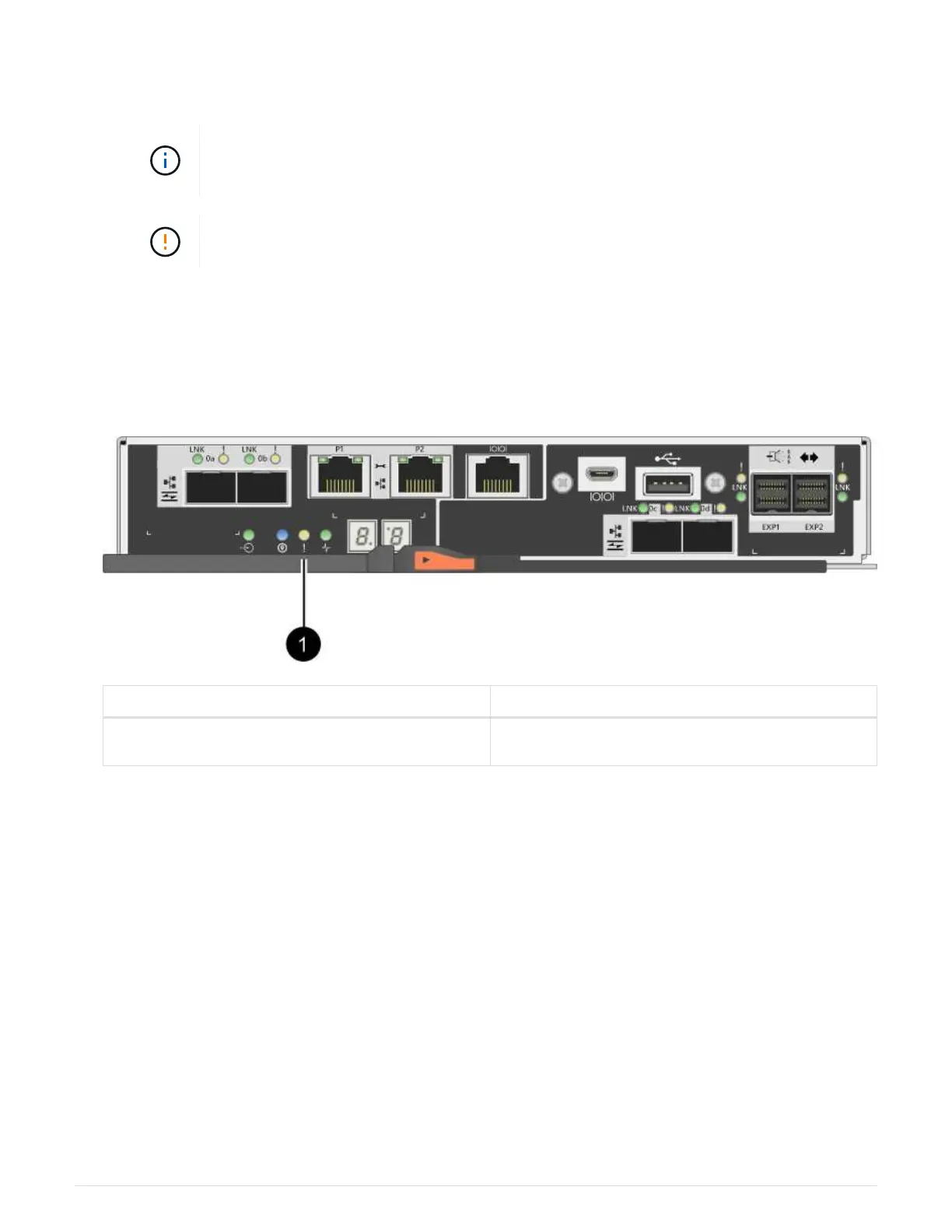◦ Ensure that no applications are writing data to any LUNs mapped from the storage to the hosts.
◦ Unmount all file systems associated with volumes on the array.
The exact steps to stop host I/O operations depend on the host operating system and
the configuration, which are beyond the scope of these instructions. If you are not sure
how to stop host I/O operations in your environment, consider shutting down the host.
Possible data loss — If you continue this procedure while I/O operations are occurring,
the host application might lose access to the data because the storage is not accessible.
2. If the storage array participates in a mirroring relationship, stop all host I/O operations on the secondary
storage array.
3. Wait for any data in cache memory to be written to the drives.
The green Cache Active LED on the back of each controller is on when cached data needs to be written to
the drives. You must wait for this LED to turn
off.
Callout Type of host ports
(1) Cache Active LED
4. From the Home page of SANtricity System Manager, select View Operations in Progress.
5. Wait for all operations to complete before continuing with the next step.
Step 4: Change the feature pack
Change the feature pack to convert the host protocol of the baseboard host ports, the IB HIC ports, or both
types of ports.
Steps
1.
From SANtricity System Manager, select Settings
› System.
2. Under Add-ons, select Change Feature Pack.
258

